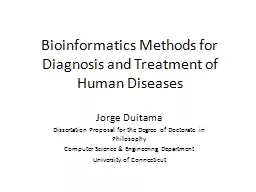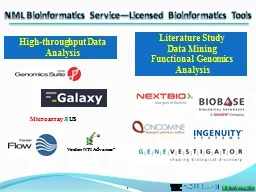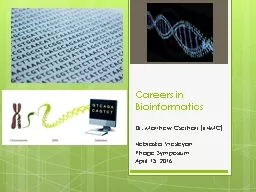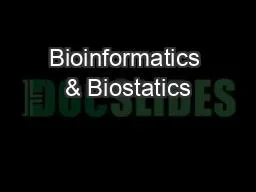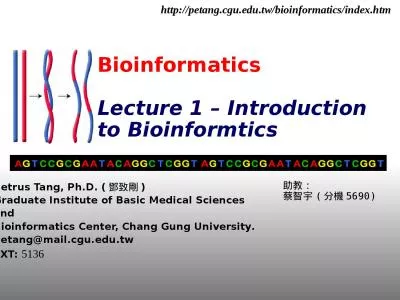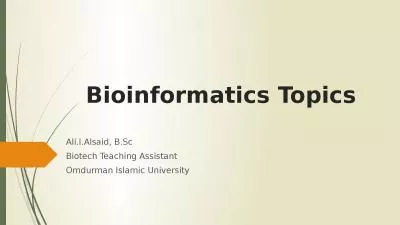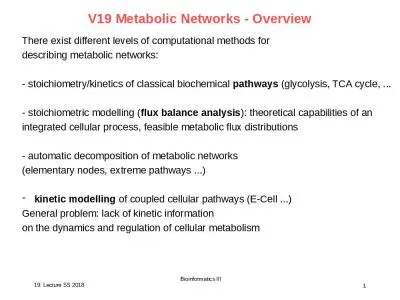PPT-Bioinformatics Methods for Diagnosis and Treatment of Human Diseases
Author : nonhurmer | Published Date : 2020-08-27
Jorge Duitama Dissertation Proposal for the Degree of Doctorate in Philosophy Computer Science amp Engineering Department University of Connecticut Outline Ongoing
Presentation Embed Code
Download Presentation
Download Presentation The PPT/PDF document "Bioinformatics Methods for Diagnosis and..." is the property of its rightful owner. Permission is granted to download and print the materials on this website for personal, non-commercial use only, and to display it on your personal computer provided you do not modify the materials and that you retain all copyright notices contained in the materials. By downloading content from our website, you accept the terms of this agreement.
Bioinformatics Methods for Diagnosis and Treatment of Human Diseases: Transcript
Download Rules Of Document
"Bioinformatics Methods for Diagnosis and Treatment of Human Diseases"The content belongs to its owner. You may download and print it for personal use, without modification, and keep all copyright notices. By downloading, you agree to these terms.
Related Documents

